5 Things I Would Do Differently if I Started BLW All Over Again
- Why you should ignore pressure about starting solid foods before your baby is ready
- How to remedy “dangling feet” and why having baby's feet resting on a solid footplate is essential for promoting safe swallow
- The benefits of offering early eaters food out of a suction plate or bowl and not directly on the tray or table
- How to cycle familiar foods back into your baby's diet while continuing to offer new foods, flavors, textures and allergenic ingredients.
- Why your baby's positioning in the high chair is so important for safe swallowing and how feet resting flat on a solid footrest helps facilitate your baby's safe swallow
- What to do when you're getting pressure from family members or friends to start solid foods before YOU know your baby is ready or safe to do so
- How having a suction bowl or mat can really help your baby with independent eating
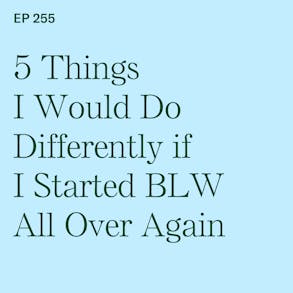
LISTEN TO THIS EPISODE
Episode Description
I love a good failure reflection and this episode is FULL of it for you. If I were starting baby-led weaning all over again, here are 5 things I would do differently.
In order to bring you this episode, I went BACK into my phone to the very first few weeks of doing BLW with my baby quadruplets and cringed SO HARD at my mistakes.
My focus as a dietitian specializing in baby-led weaning is to help you learn about all of the things your baby CAN eat - but it may also be helpful to know what to avoid, and that’s what I’m covering in this episode.
Links from This Episode
Guest Resources - Erin Ross, PhD, CCC-SLP
- www.feedingfundamentals.com
- Instagram @soffimethod
The mats and bowls I use for baby-led weaning are from ezpz.
Ezpz makes the original silicone suction mats and bowls that help promote independent eating while lowering the BLW mess factor at mealtimes.
Some of my favorite products for baby-led weaning that ezpz makes are:
- Baby-Led Weaning with Katie Ferraro program with the 100 First Foods™ Daily Meal Plan, join here: https://babyledweaning.co/program
- Baby-Led Weaning for Beginners free online workshop with 100 First Foods™ list to all attendees, register here: https://babyledweaning.co/baby-led-weaning-for-beginners
Other Episodes Related to this Topic
- Episode 172 “High Chair Positioning: Reduce Choking Risk Using This One Simple Move with Jeff Durkee of Nomi High Chair”
- Episode 84 “Why You DON'T Need to Wait 3-5 Days Between New Foods with Carina Venter, PhD, RD”
- Episode 227 “When Does the Food Allergy Prevention Window Close? with @allergykidsdoc David Stukus, MD”
- Ep 119 Premature Babies: How to Estimate & Adjust Age for Starting Solids
- Ep 110 Catch-Up Weight: Why Starting Solids Early Will Not Help Your Baby Gain Weight with Rosan Meyer, PhD, RD
- Ep 158 How Premature Babies Can Succeed with BLW with @doctorterrimd Terri Major-Kincade, MD

Latest Episodes
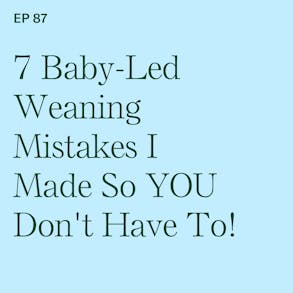
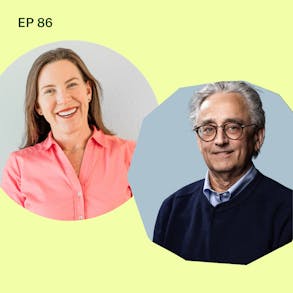
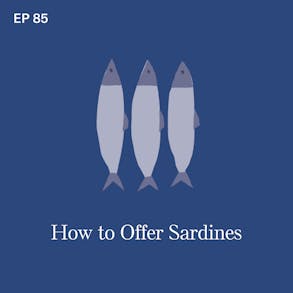
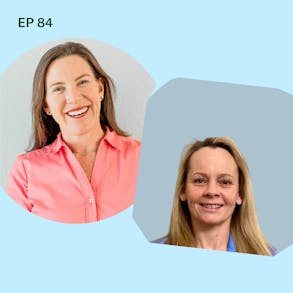
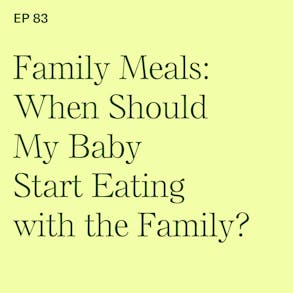

Katie Ferraro (0s):
All right. Quick pulse check. Are you feeling okay about baby Led Weaning a little nervous about this transition? Are you maybe interested in BLW but not entirely sure if this is the approach for you or maybe you started baby led weaning, but you're feeling stuck or you're gonna give up, cuz you're not sure if you're doing this right. Don't give up. I have a brand new one hour comprehensive online video training for you called Baby Led Weaning for BEGINNERS. It's totally free. And I think it's gonna ease a lot of anxiety for you. I just redid this free training. It's packed with videos and visuals on how to safely prepare BLW Foods and what the first few days looks like and how to reduce choking risk. Plus everyone on this free workshop gets a copy of my 100 FIRST FOODS LIST.
Katie Ferraro (41s):
So you'll never run out of ideas about what to feed your baby next. You can get signed up for this weeks video workshop times at BABYLEDWeaning.co. If you you've got one hour to dedicate to learning about BLW, this is the training for you. BABYLEDWeaning.Co has this week's workshop times. And don't forget, you also get that 100 FIRST FOODS LIST from this free training. And I hope to see you there. And I remember when I was doing baby led weaning with my quadruplets. I so dumb, like I was so scared to try yogurt, which didn't make any sense, cuz they'd already had formula for a long time, which is cows milk, protein, and that's what's in yogurt. So I don't know why I was scared. But looking back, you don't know, what you don't know. Hey there I'm Katie Ferraro, Registered dietician, college nutrition professor, and mom of seven specializing in baby led weaning.
Katie Ferraro (1m 24s):
Here on the BABYLED Weaning made easy podcast. I help you strip out all of the noise and nonsense about feeding, leaving you with the confidence and knowledge you need to give your baby a safe start to solid foods using baby led weaning. You don't know, what you don't know. One thing I'll say about baby led weaning is that I remember when I was starting out six years ago, trying to do baby led weaning with my own babies. I was like, there are no good resources out there for exactly how you do this. I loved reading about what baby led weaning is and why developmentally it's, you know, more appropriate, but like how do you actually do it?
Katie Ferraro (2m 4s):
So I've created all these resources over the last few years as a now specializing in baby led weaning dietician. But at the time I'm like, what did I not know that I know now? And that's kind of the premise of this episode, which is "five things I would do differently if I started baby led weaning all over again." So the way I got ready for this episode was I went back in my phone to the first few weeks that my quadruple baby started solids. So I had a singleton who I struggled a ton with spoon feeding. And then at the height of my feeding frustration with her, we found out we were pregnant with quadruplets. So quadruplets are a whole thing in and of themselves. But by the time like actually had kept them alive till their six month adjusted age mark.
Katie Ferraro (2m 45s):
I remember being like, we are not doing spoon feeding. Like I cannot force feed four babies at once. It was such a disaster with my oldest. And by that point I had figured out what baby led weaning was and done a ton of research, but you don't know what's gonna happen until you actually sit down with that baby and put that food out there. And even though I've helped so many babies since then that start solid foods with baby led weaning, every single baby is different and you never know what's gonna happen. So I went back on my phone and I was looking at the first few days of baby led weaning with the quadruplets. And I picked out five things that now that I teach this stuff full time, I'm like, oh my God, I can't believe I did that. But okay. So this is gonna be quick five things I wish I did differently. If I started baby led weaning all over again. First of all, I wished that I had the fortitude or strength to ignore people who were pressuring me to start solid foods early.
Katie Ferraro (3m 31s):
I know you guys get it all the time. That's a big baby, your breast milk's not enough and he needs food. Or that's a small baby and your baby needs to catch up so you should start early. Or those babies are six months of age they should start solid foods. Except my quadruplets were born six weeks prematurely. So at six weeks of age, they were really only like four and a half month old babies developmentally. So when their chronological age was six months, they were only four and a half. I had to wait until they were seven and a half months, real life age before they were developmentally like six month old babies. So especially that six week wait period. When people knew they were six months old, including my mom, it was like, why aren't they starting solid foods? You should be starting I spoon-fed you and you turned out fine. These babies need white rice cereal. Where are they gonna get their iron from? And I remember being like stressed about it, but also like, well, if you you're not gonna come over and help me feed them, then I'm not gonna do what you asked me to.
Katie Ferraro (4m 17s):
But I did actually wait until they're six month adjusted age. I'm glad I did, but I wish I didn't let people pressuring me about starting solid foods early, like get to me. Okay. Because even as a dietician, I know like nutritionally, they don't need anything except breast milk or formula until six months of age. And then from developmental standpoint, if they're not sitting up on their own, they don't have the core strength to facilitate a safe swallow. And they weren't sitting at six months of age, but like trying to explain that over and over, I remember just like wanting to crawl into a hole. So that was the first thing I would've done differently is just like block them out entirely and not let them get to me. The second thing I would've done differently and looking back at my pictures, I had a quadruplet feeding table. So it's kind of a thing in like preschools and childcare at these twin, triplet, quadruplet tables. And I knew this other quadruplet family that had one and I saw the table and I was like, dude, when my babies start solid food, I'm getting this quadruplet table.
Katie Ferraro (5m 2s):
It's basically like, it's like a big desk table with these four bucket seats in it. And then you would put the babies in the seat and then strap them in, it's problematic for a number of reasons. First of all, it's freaking cute, like four little babys sitting in a table, except that the biggest problem being that in a feeding table, their feet are dangling. Okay, now I would've done all sorts of different stuff to kind of DIY a solid footplate underneath the table, like with benches and boxes or Amazon boxes or phone books, whatever, to get their feet resting flat. But it's so cringy when I look back at my videos and I'm like, oh my gosh, they're like dangling their feet all over the place, which we know is an unsafe seating position for babies. So I actually did a whole podcast episode with Jeff Jerky, from Nomi highchair about the importance of a flat footrest for babies.
Katie Ferraro (5m 47s):
If you wanna go back and listen to that episode, 172, it's called "High chair, positioning, reduce choking risk using this one simple move." And I didn't know about the importance of a solid footplate at the time. So I see their dangling feet and like almost have a heart attack. Now that's the second thing. The third thing that I would've done differently is also kind of related to the feeding table, but the feeding table was a flat surface with then like this little lip where the buckets that the baby sat and kind of dropped into and I put the food directly on the table. And now I'm like watching the videos being like, how did I expect them to pick up the food if it's on a flat surface and they don't have their pincer grasp, right. So early on in self feeding, your baby only has their Palmer, their whole hand grasp.
Katie Ferraro (6m 27s):
And so they smash the foods around the table, which is kind of ridiculous because then they're just making a huge mess. And there there's no way they can get the food up and into their mouth. I think it wasn't until after like a couple weeks of starting solid foods that I started research and I found this suction mats and bowls from EZPZ. So that's the company that I now use only their products in both my family and in my feeding practice. But EZPZ makes the original silicone suction mats and bowls all designed by their feeding expert. They're a hundred percent food grade silicone, and they have these pliable flexible barriers that your baby uses their whole hand grasp to rake and scoop the food up against that barrier. And then up into their hand and then into their mouth.
Katie Ferraro (7m 8s):
So then I kind of fast forwarded through my phone. And when I started using the plates, like a few weeks into it, it was still before they had their printer grasp, but they were so much more proficient actually picking the food up because they weren't just smashing it all over the table, which is what was happening when I was just putting directly on the table. So that's the third thing I would've done differently was not have fed the foods directly on the table. So if you're also in the market searching for some gear before you get started or after you started and you're like, why is this not working? I love the brand EZPZ and I am an affiliate for them. I have a discount code, Katie10 that works for 10% off at ezpzfun.com. I love their tiny bowls, their mini bowls, and their mini mats for starting solid foods. The fourth thing I would've done was I was looking through the days and noticing like I was just feeding them avocado, banana and sweet potato, like for a while.
Katie Ferraro (7m 55s):
And I wish that I would have done more foods faster and I don't know what I was waiting for. And so parents always ask me, are you sure you can do one new food a day? And we've done tons of content on this. There is so much research to support the idea of diet diversity and a greater variety of foods. A lot of that has to be honest, come out recently. So I feel like it's not like something I missed, but I was like, what was I waiting for to try meats and allergenic foods and different textures? Like I wish I had just moved faster with them. I did actually end up, the reason the whole 100 first foods approach came to be was because I did end up doing a 100 first foods with the babies right before they turned one. But I remember having to kind of speed it up towards the end being like, oh, we're gonna make this. Like I wanted to do it before they turned one.
Katie Ferraro (8m 37s):
Whereas if I had just started doing a greater variety of foods early on, like just, I wish I knew that gosh, Babies can eat so many more foods than we give them credit for. And so if you're interested in knowing you, maybe you're hearing like, "oh, babies need to wait three to five days before they try new foods."" That's not true. There's no research to support that. One of the most downloaded episodes on the podcast is episode 84 called "why you don't need to wait three to five days between new foods." And it's an interview I did with the PhD dietician, Karina Ventor, who does a lot of research on food allergies and prevention and diet diversity. And we're kind of talking about this myth of needing to wait three to five days between new foods and why that's actually harmful and how that holds your baby back from achieving their potential with self feeding and getting all the allergenic foods in early and often and doing the different textures.
Katie Ferraro (9m 22s):
So I guess number four is I wish I would've done more foods faster. And then the fifth thing that I wish I would have done differently or would do differently if I started baby led weaning all over again, was to be much more conscientious about the importance of allergenic foods early and often. I have been trained traditionally as a dietician over 20 years ago, when the guidance was don't do milk until one, don't do peanuts till two, eggs till three, it was like, it was so much different than we have now. And I think at the time when I was starting solid foods with my quadruplets and this was around 2016, so it was kind of right, right at the, the middle point when all of this new research started coming out and guidelines started changing about introducing allergenic foods early and often.
Katie Ferraro (10m 2s):
I can't remember. I was gonna try to look back in my phone and see if we got all of the allergenic foods in by the time like 11 months of age. It kind of looks like the protective window for allergenic foods closes around 11 months of age in episode 227, Dr. David Stukas came on and we talked about when this food allergy prevention window closes. And I remember being scared of the allergenic foods, but again, not really understanding that like the risk of true anaphylactic reaction in infants is very rare. Death from anaphylaxis and infants is almost unheard of. And that the only thing I can do as a parent to lower my baby's risk of food allergy is to introduce these allergenic foods. I remember being like scared to do milk. This was funny. I remember being scared to do yogurt with them, which doesn't make any sense because that's cows milk protein.
Katie Ferraro (10m 46s):
And the quads had been like on half breast milk, half formula since they turned like, I think four months of age, three months of age. So they'd already had cows milk because formula the base of it is cows milk protein. So like, why was I scared to do yogurt? It kind of didn't make sense, but anyway, you don't know what you don't know. So those are five things that I would've done differently If I were starting baby led weaning all over again. I would've not listened to any pressure about starting earlier. I wouldn't have let it like get to me or second guess myself, like take away message there, you know, your baby best, especially for those of you guys with premature babies, go back and listen to episode 119, it's called "Premature babies. How to Estimate and Adjust Age for Starting Solids." It's so important for kind of blocking out the noise, cuz your baby is not yet ready to eat. If they're not six months adjusted age, if they were born prematurely.
Katie Ferraro (11m 28s):
The second thing I wouldn't have used a feeding table with dangling feet. I would've done a bunch of adjustments to get their feet resting flat. If I was going to use the feeding table. And then the third thing was, I wouldn't have put the food directly on the table or the tray as I see a lot of parents do because you're not setting your baby up for success. Having that flexible barrier against which they can rake and scoop the foods up and out using their whole hand grasp is so important early on in feeding. And I see families all the time who give up because they're like this isn't doing anything. The baby's not getting the food into their mouth. Well it's because you're just putting the food on a flat surface and all they have is that whole hand palmer grasp. And they're just smashing the food around the table. So if we set them up for success with that suction mat or bowl, with the pliable barrier, they can get the food up and in their mouth themselves.
Katie Ferraro (12m 11s):
Number four, I would've done more foods faster because you don't need to wait three to five days between new foods, even though unfortunately many, many, many practitioners are still perpetuating that false myth. And then number five, I would've done the allergenic foods faster. Knowing now that we think the prevention window for food allergies closes at around 11 months of age. So take a look at your own baby and how many of the allergenic foods you've done. And If you haven't gotten all nine of them in yet, maybe speed things up a little bit so that you can prior to your baby turning 11 months of age. And if you wanna try out the 100 first foods challenge for your baby, my 100 FIRST FOODS LIST is free to you on my free one hour online video training workshop called BABY LED Weaning for BEGINNERS. This is where I take you through the beginning stages of baby led weaning to set you up for success.
Katie Ferraro (12m 56s):
So you don't make the same mistakes that I made. You can sign up for this week's free video workshop trainings and get that 100 FIRST FOODS LIST. They're all in the same place, head to BABYLEDWeaning.co again, BABYLEDWeaning.co for the free workshop and the 100 FIRST FOODS LIST. And thanks so much for listening. I'll see you next time.
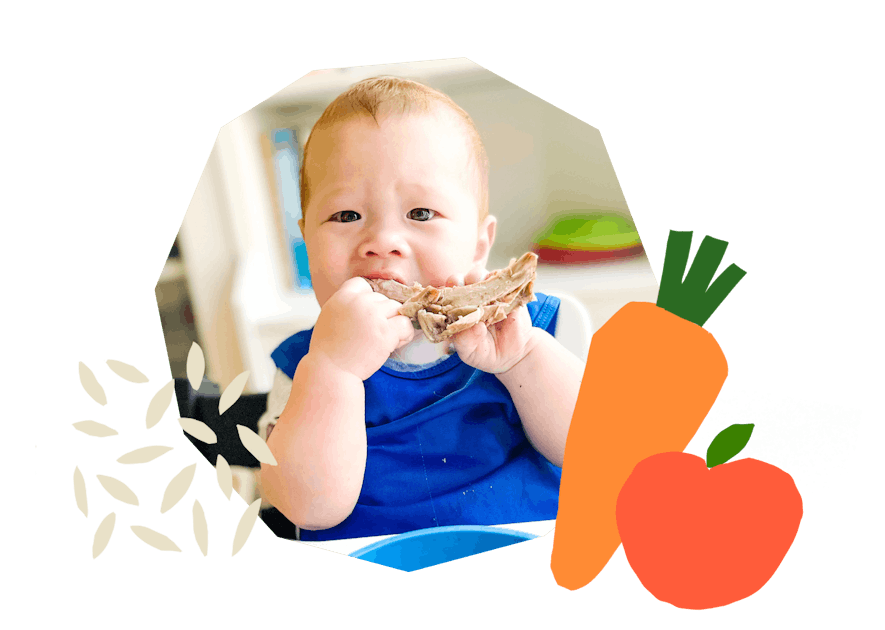
The Program Baby-Led Weaning with Katie Ferraro
A step-by-step digital program for starting solid foods safely and navigating the original 100 FIRST FOODS™ meal plan with baby-led weaning.
 EXPERT-LED, PROVEN APPROACH TO EATING REAL FOOD
EXPERT-LED, PROVEN APPROACH TO EATING REAL FOOD CONCISE VIDEO TRAININGS TO MASTER BABY-LED WEANING
CONCISE VIDEO TRAININGS TO MASTER BABY-LED WEANING 100 FIRST FOODS DAILY MEAL PLAN WITH FOOD PREP VIDEOS
100 FIRST FOODS DAILY MEAL PLAN WITH FOOD PREP VIDEOS
Baby-Led Weaning for Beginners Free Workshop
Is your baby ready to start solid foods, but you’re not sure where to start? Get ready to give your baby a solid foundation to a lifetime of loving real food…even if you’re feeling overwhelmed or confused about this next stage of infant feeding.
Get baby-led weaning recipes and tips delivered to your email inbox.


